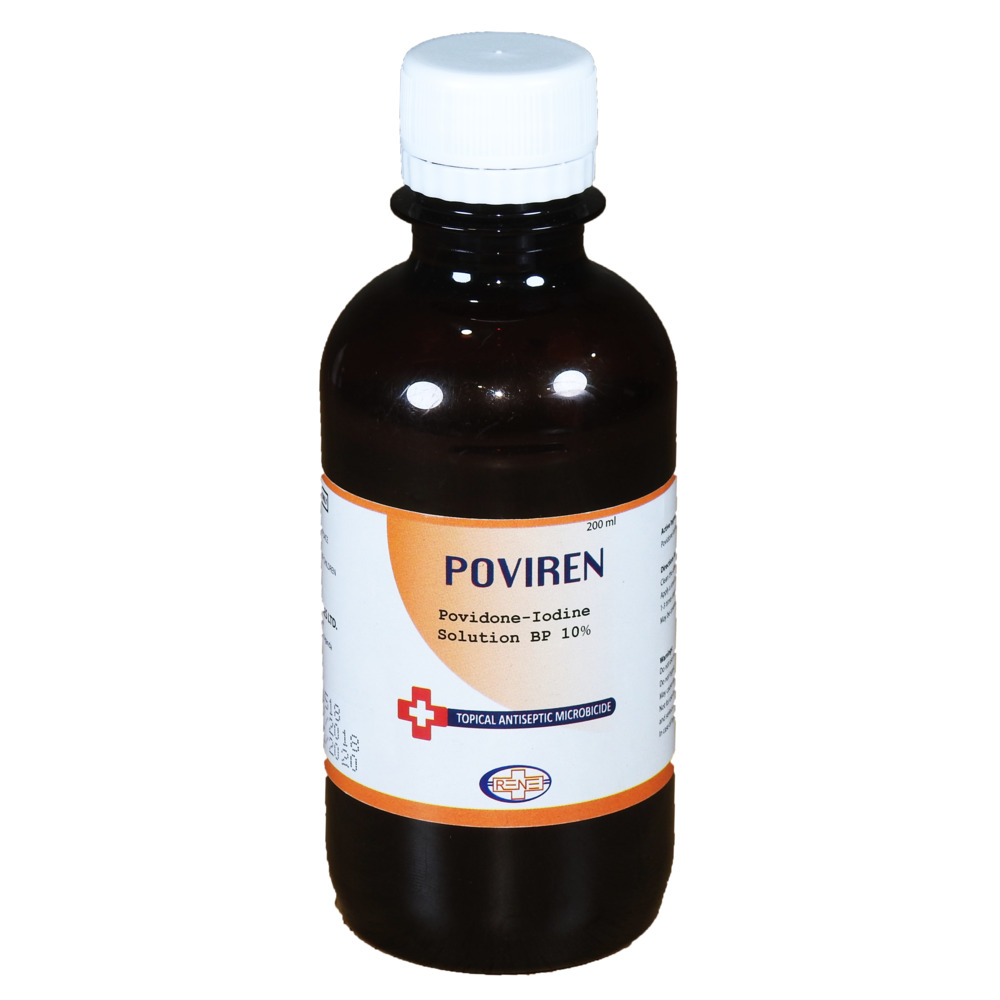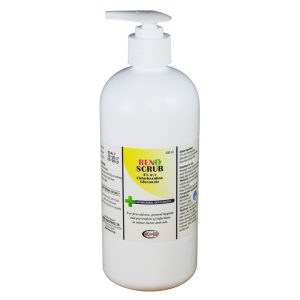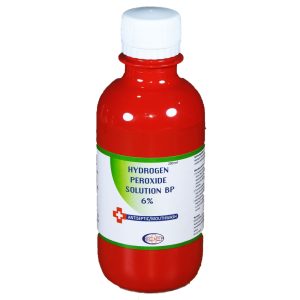COMPOSITION
Povidone Iodine BP 10%w/v
PRESENTATION
Poviren solution is a brown solution and comes in amber PET bottle with plastic caps: 200ml.
MODE OF ACTION:
Pyridoxine (vitamin B6) is a water-soluble vitamin involved principally in amino acid metabolism but is also involved in carbohydrate and fat metabolism. It is also required for the formation of hemoglobin. Pyridoxine deficiency is rare in humans because of its widespread distribution in foods. Pyridoxine deficiency may be drug induced, and inadequate utilization of pyridoxine may result from certain inborn errors of metabolism. Pyridoxine deficiency may lead to sideroblastic anaemia, dermatitis, cheilosis and neurological symptoms such as peripheral neuritis and convulsions.
PHARMACOKINETICS:
Pyridoxine is readily absorbed from the gastrointestinal tract after oral administration and converted to the active forms pyridoxal phosphate and pyridoxamine phosphate. They are stored mainly in the liver where there is metabolization to 4-pyridoxic acid and other inactive metabolites which are excreted in the urine. As the dose increases proportionally greater amounts are excreted unchanged in the urine. Pyridoxine (Vitamin B6) crosses the placenta and also appears in breast milk.
INDICATIONS:
The prevention and management of Pyridoxine (vitamin B6) deficiency.
Treatment of sideroblastic anaemias, homocystinuria or primary hyperoxaluria.
Pyridoxine (Vitamin B6) dependency in infants.
Isoniazid-induced neuropathy (HIV AIDS)/ Deficiency States/ Idiopathic sideroblastic anaemia/ Wilson’s disease neuropathy
DOSAGE AND ADMINISTRATION:
As directed by the physician.
Doses of up to 150 mg daily have been used in general deficiency states.
Higher doses of between 200-600 mg daily have been used in the treatment of sideroblastic anaemias, with similar doses being used to treat certain metabolic disorders such as homocystinuria or primary hyperoxaluria. Lifelong treatment may be required to prevent reoccurrence.
Pyridoxine is used in HIV patients on isoniazid to prevent peripheral neuropathy and other isoniazid toxicities3. The dosing of pyridoxine when administered with isoniazid preventive therapy for HIV-infected individuals is 25 – 50mg daily.
CONTRAINDICATIONS:
Hypersensitivity to pyridoxine hydrochloride.
WARNINGS AND PRECAUTIONS:
Pyridoxine (Vitamin B6) is relatively nontoxic at normal doses however long-term administration of high doses (2-6g daily) is associated with the development of severe peripheral neuropathies.
No adverse effects have been reported with the use of physiologic doses during pregnancy. However the use of high doses during pregnancy has been implicated in some cases of Pyridoxine (Vitamin B6 ) dependent syndrome in infants.
Pyridoxine (Vitamin B6) is excreted in breast milk however no adverse effects have been reported with the use of physiologic doses during lactation.
ADVERSE EFFECTS:
Nausea, headache, paresthesia, somnolence and low serum folic acid concentrations have been reported.
Pyridoxine (Vitamin B6) is relatively nontoxic at normal doses however long-term administration of high doses (2-6g daily) is associated with the development of severe peripheral neuropathies.
Transient dependency symptoms may occur upon withdrawal of therapy at a dose of 200mg/day for over 1 month. The significance of this is not known however for patients on large doses for long period of time withdrawal of therapy should probably be gradual.
INTERACTIONS:
Pyridoxine increases the peripheral metabolization of levodopa. When levodopa is combined with carbidopa this effect is prevented.
Isoniazid, cycloserine, pyrazinamide and penicillamine may antagonise the effects of pyridoxine and lead to a secondary deficiency.
It has been reported that pyridoxine decreases serum concentrations of phenobarbitone.
Patients taking oestrogens e.g. oral contraceptives have higher Pyridoxine (vitamin B6) requirements.
OVERDOSAGE:
Sensory neuropathy can occur following long-term administration of large doses. Withdrawal should be started but should probably be gradual to prevent the occurrence of transient dependency symptoms.
STORAGE:
Store in a cool & dry place below 30°C.
Keep out of reach of children.






